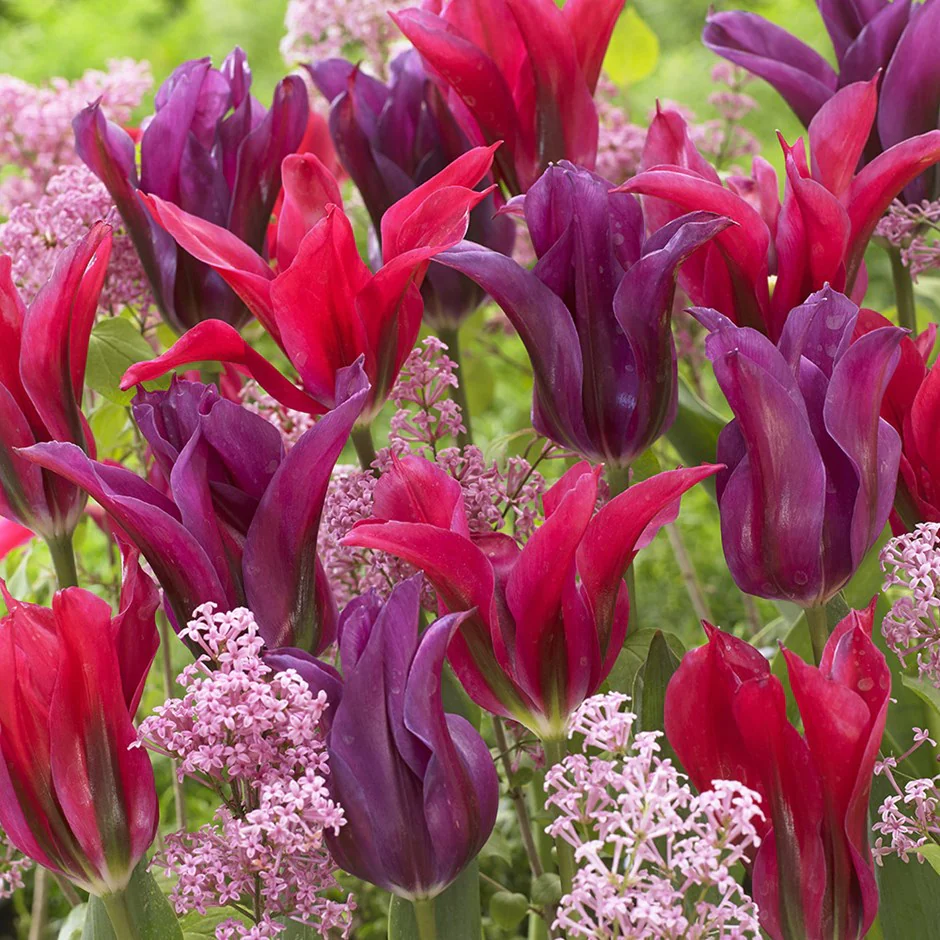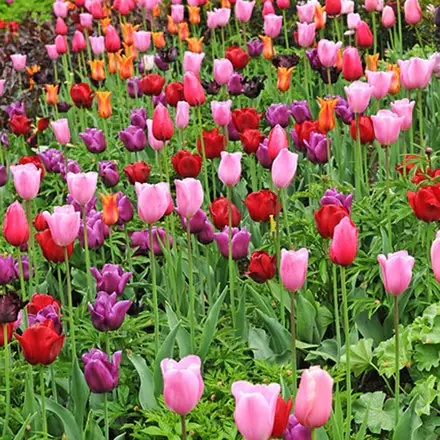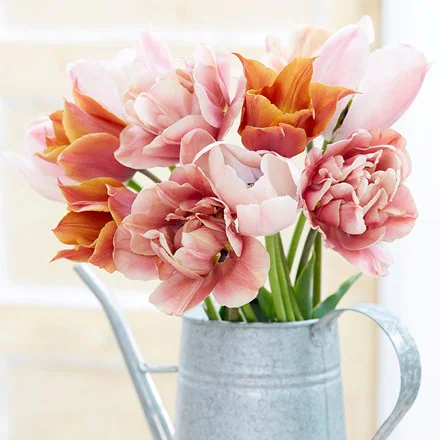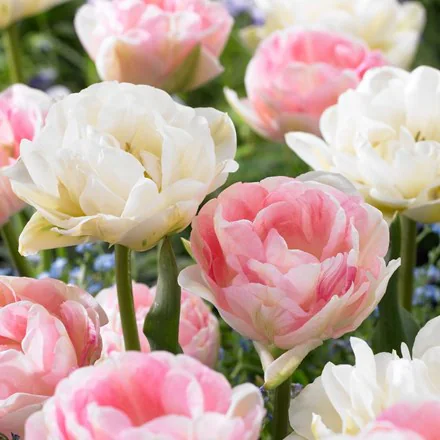The tulip has long been a beloved favourite of mine. Their innate beauty comes at a time of year when many of our garden plants are still dormant. Apart from a true blue, one would be hard pushed to imagine a colour of the rainbow in which their alluring blooms are not available. Their flowers are long awaited through the wintery days and their welcome appearance heralds warmer and brighter times to come.
Up until recent years I have scoured the online catalogues with bated breath to find new and scarce varieties or proven stalwarts. Their attraction to me bridges all forms, whether they be single, double, crinkled, fringed and even undeniably bright and multi-coloured like the parrot tulips. It however eluded me that, rather than planting carefully chosen tulips in groups of single varieties, their beauty can be enhanced further still by planting in mixtures of complimentary varieties.
However putting together these mixtures is not such child’s play as one might initially think. You not only have to choose forms with a palette of colours which sit pleasingly together, but also varieties must be selected that will be in bloom at the same time. This is no mean feat as, although we all know tulips flower in spring, not many of us would be able to pinpoint when in the spring each variety will flower. There are early flowering and late flowering varieties, and it is not always obvious from the catalogue descriptions whether the various forms will choose the same week to grace us with their blooms. Therefore this is often a job best left to the nurserymen and well informed retailers. They have often had the privilege of having visited the bulb fields or the world famous Dutch Keukenhof gardens where millions of bulbs are planted together. Here they can plainly see which ones go together well, both in terms of colour and form and time of flowering.
Why not choose the perfect mixture of tulips to suit your garden’s colour scheme. Here I have chosen some expertly curated collections from Crocus.
Store your bulbs in a cool, dry place when they arrive. Planting of Tulips is best left until the soil is cold as this helps to avoid fungal and viral diseases such as Tulip Fire. In times gone by it is said that the gardeners would bare their bottoms and sit on the soil to test the temperature! Whilst I don’t recommend this, leave planting until at least late October or early November. Full planting instructions will be included with any purchases. I hope that the article will give some of you some inspiration for a beautiful display next spring.
To view all the latest Tulip collections at Crocus click here
Mark Snelling
All images copyright Crocus
If you have enjoyed reading our blog post then why not fill in the form provided to allow us to send you our blog posts and newsletters by email.




